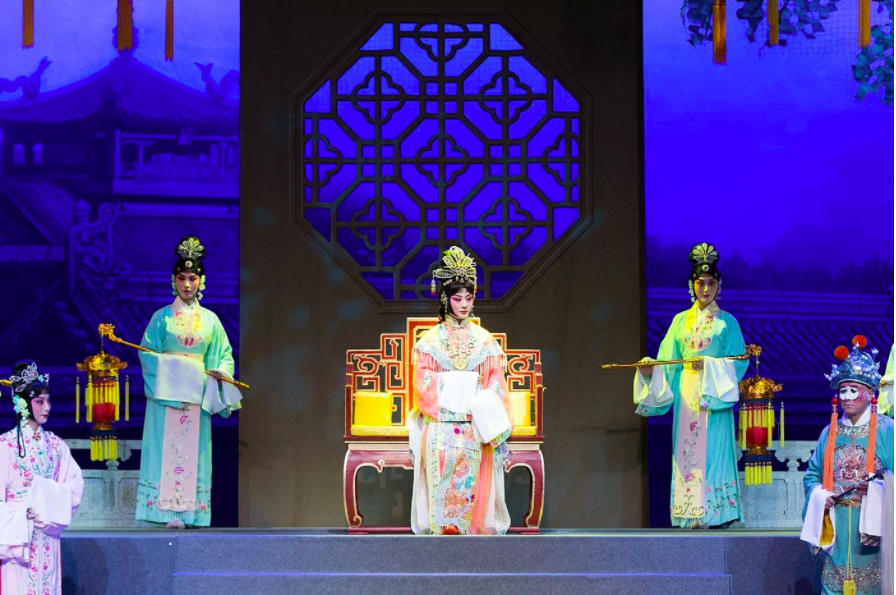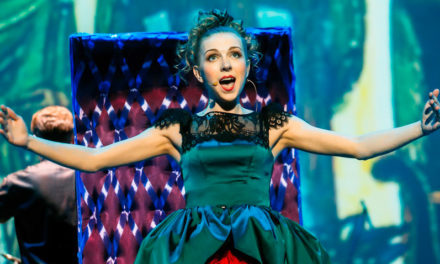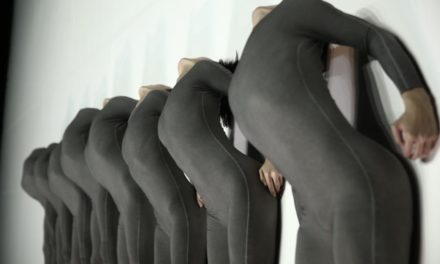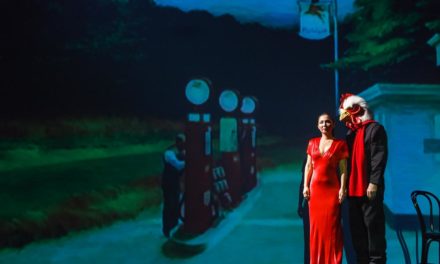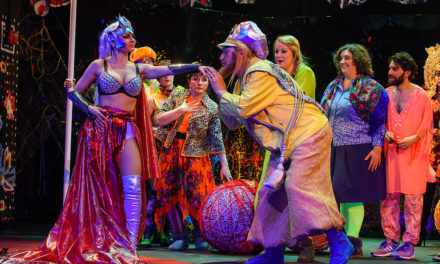Chinese opera is as expansive and diverse as China itself – and it continues to thrive in the face of more modern entertainment.
This article is brought to you by the 46th edition of the Hong Kong Arts Festival.
Chinese opera expert Tam Wing-pong is a straight shooter when it comes to appraising Hong Kong’s opera scene. He is as vocal in expressing its flaws as he is about showing enthusiasm for its latest developments. Tam is regularly called up to critique local performances in his capacity as member of the Programme Committee of the Hong Kong Arts Festival Society, and one event he is particularly curious about is the classic Cantonese opera Princess Changping, which is being reworked and retold by the China National Peking Opera Company during this year’s Hong Kong Arts Festival.
“In the old days it was always Cantonese opera trying to take themes from Beijing opera,” he says. “This time, it’s a reverse. They are trying to pay tribute to Cantonese opera in Hong Kong.”
Staged by some of the biggest stars of Beijing opera, the production will merge two distinct styles of Chinese opera, hopefully without doing a disservice to either of them. Princess Changping, which tells the tragic story of the last princess of the Ming Dynasty, is an example of how Hong Kong’s openness has enabled opera to flourish in ways it cannot in mainland China. In the mainland version of the opera, a working-class character called Li is depicted as a proletarian hero, but in the Cantonese version, he is a traitor whose treachery brought an end to the Ming dynasty.
This has made it difficult to convince authorities on the mainland to put it on – until now. Beijing opera stars Yu Kuizi and Li Shengsu have convinced authorities to skirt the politics of Chinese history in order to bring two of the greatest forms of Chinese opera together.
Important elements have been translated into this new version, which will be one of five masterpieces performed by the Peking Opera Company. Sung in the Beijing dialect of Mandarin, it will tell the Cantonese version of the story with an aesthetic approach that attempts to pay homage to both forms. The make-up, a hugely distinctive part of Chinese opera, brings together elements from both Cantonese and Beijing opera traditions.
Tam was sought out by Yu and Li for advice on how to make the piece palatable to Hong Kong audiences. His advice was for to focus on making the production unique and not just a replica of the Cantonese version. He says it is only through flexibility, flair and a willingness to step into new creative spaces that Chinese opera can thrive in an era when it competes with many other forms of entertainment.
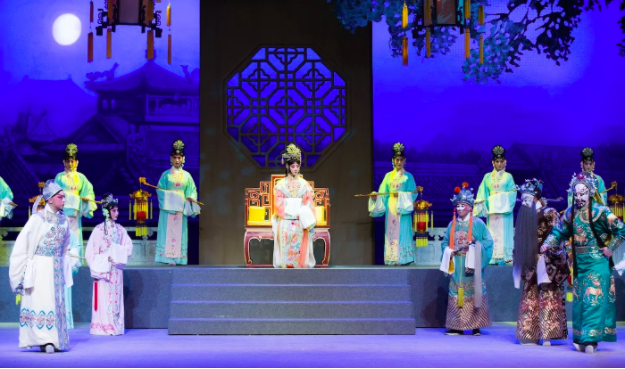
Princess Chanping – Courtesy HKAF
Once Upon a Time
The history of Chinese opera, or xiqu as it is known in Mandarin, is as rich, diverse and expansive as the nation out of which it sprung. Its history stretches back millennia, and it has undergone constant cross-pollination as ideas spread between its regional variants. Tracing a map of its myriad forms across China is an activity that still keeps academics busy well into the 21st century – and it provides plenty of fodder for artists who are looking to innovate. This is part of what makes the art form so interesting and complex. It serves as a testament to the sprawling cultural and deep history of Chinese civilization.
Chinese opera includes a handful of identifiable elements, including musical theatre, flamboyant aesthetics, poetry recital, vocal pyrotechnics, stylised movement and sometimes martial arts. But it’s hard to pin down its exact origins, since it evolved gradually over hundreds of years across China, with about 200 to 300 types of regional operas existing in their own unique forms today. Each borrows from the other, something particularly evident in Farewell My Concubine, a classic Beijing opera play that will soon be staged in its Cantonese interpretation at the upcoming Hong Kong Art Festival.
Opera was once the most popular form of entertainment in China, but it now competes with film, pop music and other cultural imports, which has sidelined it in many parts of the country. And yet its popularity endures. There’s almost certainly enough infrastructure, commitment, pride, and interest that it will continue to have a future.
Within the diverse topography of Chinese opera, some forms stand out more than others, with their own masterpieces and memorable performances. Among the most notable are Kunqu, Beijing, Shaoxing and Cantonese opera. While there are elements of overlap in all these opera types — each possesses their own signature style and story — they have been shaped by differences in regional taste. Government policy has made a difference. Since the Communist Revolution of 1949, Beijing opera has been subject to strict state controls, while in Hong Kong, the British colonial government allowed Cantonese opera to flourish according to the will and demands of artists and audiences alone.
Among these leading opera types, Kunqu is the oldest and is renowned for its refined, elegant movement alongside a highly stylised, mesmerizingly sophisticated aesthetics. Its signature musical forms were adapted in the 16th century, drawn from a tapestry of 14th-century music emanating from the Kunshan in Suzhou, in modern-day Jiangsu province. Shaoxing, or Yue opera, which comes from Shengzhou in Zhejiang province, is another extremely popular strain of opera.
Beijing opera is more recent, yet it now enjoys an unrivaled stature, with bombastic opera houses, including the large domed National Centre for the Performing Arts designed by star architect Paul Andreu in 2007. Beijing opera draws on an extensive, though malleable, repertoire and its community enjoys generously funded artist training programs that make it the most widely touted and supported form of Chinese opera today. But its history, like the history of so many enduring art forms, is one of creative borrowing and outside influence.
Not only does Beijing opera owe much to the traditions of Kunqu, its origins have much to do with traveling troupes from nearby Anhui, who were invited to Beijing by the Qing Dynasty’s Emperor Qianlong to come and perform for his birthday in 1790. Beijing opera is known for its epic stories and muscular style of performance. Martial arts-inspired acrobatic extravaganzas tell stories of war and complex power plays, which no doubt reflects Beijing’s stature as the seat of power, from which all tentacles of influence wrap themselves across a nation that is still very much subject to the homogenizing controls of the central government.
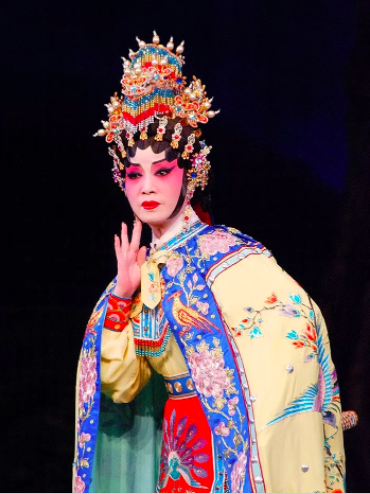
Farewell My Concubine – Wan Fei-yin as Yuji (1995 HKAF) ©Annie Chow – 1995
The Northern Behemoth
Beijing opera boasts around 1,400 works, many derived from historical dramas, folklore and classical literature that often focuses on political struggles but also incorporate storylines from a more humble domestic sphere. Reaching a height of popularity during the Qing dynasty 1644 to 1912, the Empress Dowager Cixi was particularly fond of the art form, elevating it above Kunqu in stature.
Its performers often become celebrities, and they are particularly rated for their ability to move in delicate ways according to specific codes and gestures that require mastery of poise, movement, and rhythm, often backed by a modest ensemble that includes traditional melodic and percussion instruments, all led by the jinghu, a two-string spike fiddle. The musical structures used are threefold. Singers perform arias, which tend to express heightened emotion and which demand great vocal control and range, though with a degree of creative, improvisational flair. In between arias are fixed-tuned melodies performed by instruments that serve diverse storytelling functions. Percussion patterns are added into that mix, making performances enlivening, and at times raucous and spellbinding.
Some untrained (or perhaps Western) ears might find the aural dissonance of Chinese opera to be an acquired taste. Li Siu-leung, the former Dean of Chinese Opera at the Hong Kong Academy for Performing Arts, says that there are vast differences in how Chinese and European musical tastes have developed. The pleasure Western listeners derive from classical music often comes from harmony – the experience of listening to well-matching notes coming together, the tension and build up of discord that is inevitably resolved, which brings a sense of relief and satisfaction.
By contrast, gratification in Chinese opera is not centered around feelings of resolution attained by harmony, says Li. Rather, its audience finds joy in the experience of the different visual and aural stimuli coming together in enlivening ways. The pleasure of seeing beautiful structured sets, of witnessing the elegant, subtle, gestural language of its enigmatic, visually-arresting performers heaped in effusive garb, and of listening to the virtuosity with which their voices embark on ambitious rhythmic adventures – all serve as ingredients for an escapist, flamboyant spectacle.
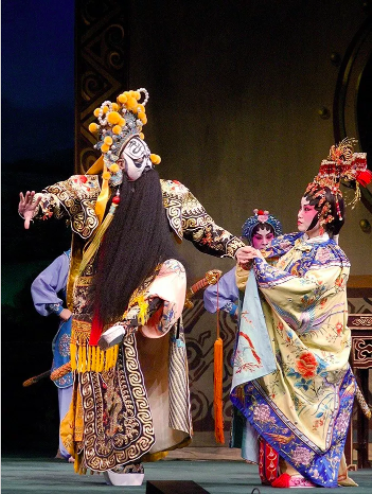
Yau Sing-po as Xiang Yu and Wan Fei-yin as Yuji (1995 HKAF) ©Annie Chow
Certainly, the lack of harmony in these works does not mean there is no enjoyment in listening. In Mandarin, going to an opera is ting xinqu – and ting means listening. For Chinese opera, the quality of singing might well be the most important factor in critiquing a show – an aspect which, according to Li, does require some degree of understanding and sophisticated appreciation.
Beijing opera is marked by specific role types, a tradition that exists in other regional opera types, in which performers are trained in specific roles and stick with them through the course of their career. There is sheng, the male heroic figure; dan, which refers to any kind of female role; jing, a male character with an elaborately painted face; and chou, the clown. Each requires a strong and specific skill set and each is revered in their own way. Only true virtuosos can cross-role types, a feat that requires absolute mastery of the broad range of talents seen on Chinese opera stage.
Like so many art forms in mainland China, including ink art, the history of Beijing opera experienced a major setback during the Cultural Revolution, during which cultural products — particularly culture that had highbrow connotations and was deemed out of touch with the proletariat class — was suppressed in favor of utilitarian pursuits. That suppression eventually gave way to a kind of censorship that allows the operatic tradition to exist as long as its message chimes with that of the Communist Party.
This practice continues today, as the government in Beijing leverages Chinese opera as a propaganda vehicle. Beijing opera is promoted abroad with aplomb, and extensive resources are pumped into Beijing opera troupes; being selected to train in its prestigious institutions ensures a very comfortable life. But with that state endorsement comes certain diminishment of the art form’s possibilities. Plays with “problematic” storylines are hard to stage, and the government issues directives on the kinds of themes performances should explore.
This year is no exception as the Chinese Communist Party celebrates the 80th anniversary its establishment. Performances are expected to deal with the subject of anti-corruption, a banner that Xi Jinping has flown on his rise to become the most powerful Chinese leader since Deng Xiaoping.
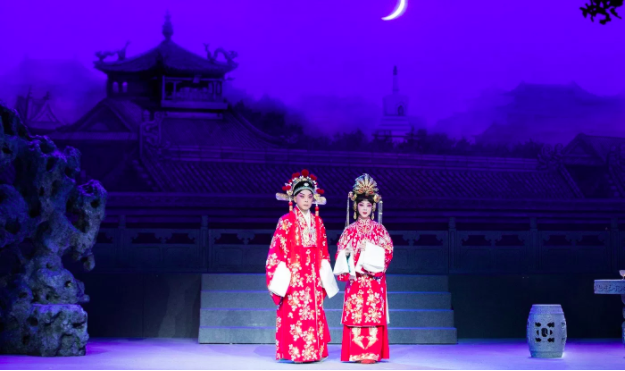
Princess Chanping – Courtesy HKAF
The Southern Frontier
Things have always been freer in the south. Hong Kong, in particular, has been a haven for unaltered Chinese opera since 1949. Although Cantonese opera does not quite enjoy the prestige of Beijing opera, it has enjoyed an unbroken tradition that has been allowed to develop according to the demands of audiences as opposed to that of the regime. The British colonial government that ruled Hong Kong from 1841 to 1997 saw no interest in determining what should and shouldn’t be put on; it largely ignored the sphere altogether.
As with the entire tradition of Chinese opera, debate persists around the onset of the art form. Li traces its origins to the mid-19th century and says that the spheres in which it existed and the functions it served are various. Now considered a highbrow artform, and a mark of sophistication, it has historically served both elite and folk audiences. Around the Cantonese-speaking regions of Guangdong and Guangxi provinces, makeshift bamboo theatres have historically sprung up in villages during festivals that pay homage to local deities. When these traditions were forbidden during the Cultural Revolution, it was up to Hong Kong to carry the torch of Cantonese opera.
For Tam Wing-pong, what is special about the Hong Kong opera scene is the diversity and the openness with which it has been able to flourish. A particular jewel in the Cantonese opera crown is the Pavilion of a Hundred Flowers, which was written in 1957 by Tong Tik-sang, a prominent innovator in Cantonese opera history. It will soon be performed by the Hong Kong Arts Festival in a modern rendition that stylishly rejuvenates the story according to the vision of leading play director Fredric Mao.What also differentiates Cantonese opera from its northern cousin is its more romantic and lyrical sensibility. These aspects give it the edge it otherwise lacks when compared with Beijing opera’s impressive infrastructure and rigorous training programmes.
Besides the lack of censorship and its role in folk celebrations, Cantonese opera differentiates itself in other ways. Language is a strong hallmark of any particular regional opera. Cantonese opera is usually performed in Cantonese, but many performances make use of an archaic court dialect known as Guanhua. In terms of story preferences, Beijing opera specializes in war and power, while Cantonese opera tends to focus more on love stories. Other differences are both musical and aesthetic, within the use of props, tunes, makeup, lighting, and stage diverging.
Both Tam and Li are certain about the survival of Cantonese opera, even if it has been overshadowed by more modern forms of entertainment. This is evident in the fact that there is an increasingly diverse range of venues and performances. In recent years, the Ko Shan Theatre has been renovated and expanded to serve Cantonese opera performances, and the historic Yau Ma Tei Theatre was restored to accommodate up-and-coming opera performers. Later this year, the 1,250-seat Xiqu Centre — the city’s first purpose-built Chinese opera house, designed by Chinese-Canadian architect Bing Thom — will open in the West Kowloon Cultural District.
“I think Hong Kong is very lucky that we still have some people [keen to preserve the traditions],” says Tam. “That is why I keep saying that Cantonese opera is very local and vibrant. It’s still very much alive.”
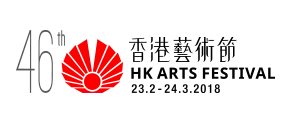
The Hong Kong Arts Festival runs from February 23 to March 24, 2018. For more information, please click here.
This article was originally written by Sarah Karacs for Zolima City Mag on January 18, 2018 and has been reposted with permission.
This post was written by the author in their personal capacity.The opinions expressed in this article are the author’s own and do not reflect the view of The Theatre Times, their staff or collaborators.
This post was written by Zolima CityMag.
The views expressed here belong to the author and do not necessarily reflect our views and opinions.

